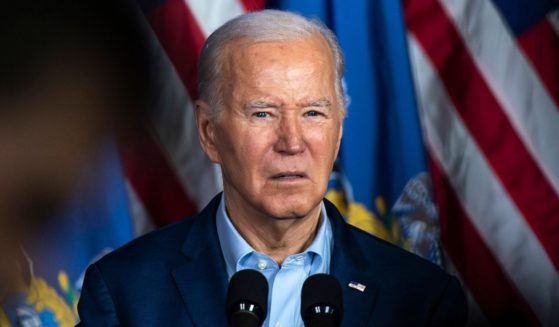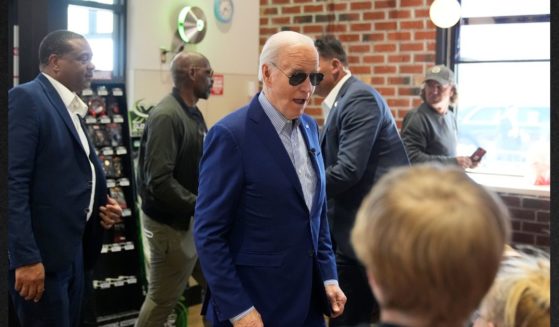CDC Chief Says 20 US States May Be Able to Re-Open Within 14 Days
With the nation nearing a long-awaited peak in the coronavirus pandemic, U.S. Centers for Disease Control and Prevention director Dr. Robert Redfield said Wednesday that a number of the more mildly affected states may be in a good position to re-open come months’ end.
According to Reuters, Redfield told the hosts of ABC’s “Good Morning America” that major regional differences in coronavirus transmission have been recorded, leading him to believe federal officials could be working as early as May 1 to advise executive branch leadership in nearly 20 states on their efforts to relax economically taxing social distancing guidelines.
Which states will truly be prepared to take such steps by that soft deadline remain unknown.
Johns Hopkins data, however, suggested as of Thursday that (in ascending order of their case numbers) Wyoming (with 309), Alaska, Montana, North Dakota, Hawaii, West Virginia, Vermont, Maine, Nebraska, New Hampshire, South Dakota, Idaho, New Mexico, Arkansas, Kansas, Oregon, Minnesota, Delaware, Oklahoma, Iowa and Kentucky (with 2,707) have accounted for the lowest totals in the nation.
“There are a number of counties within this country that have not experienced really any coronavirus despite testing,” Redfield said.
“There are a number of states — 19, 20 states — that really have had limited impact from it. So I think we will see some states that are, the governors feel that they’re ready, we’re poised to assist them with that reopening.”
“I think there’s a number of jurisdictions that are very close to having that capability.” –@CDCDirector on the status of aggressive coronavirus testing in the United States. pic.twitter.com/7K386zunE3
— TODAY (@TODAYshow) April 17, 2020
The news comes less than one month after Democratic California Gov. Gavin Newsom on March 19 announced introduction of the nation’s first official stay-at-home order, mandating closure of so-called non-essential business, barring large gatherings and encouraging decreased public activity for state residents.
Quickly taken up by 41 more states nationwide, similar stay-at-home orders would apply the brakes to a booming U.S. economy, as Fox News reported, prompting the loss of more than 22 million jobs almost overnight.
Congress acted on a bipartisan basis on March 27 to stem the tides of economic fallout, passing a historic $2.2 trillion relief package meant to bolster the finances of struggling American families, companies and government response efforts.
President Donald Trump and congressional Republicans, however, have been adamant in suggesting legislated economic relief would only serve as a short-term band-aid for economic losses suffered amid the ongoing coronavirus outbreak.
For the economy to be revived, Trump and his allies argued, it would sooner or later be required that the nation re-open for business in a more rapid fashion. Labor’s re-entry into the workforce could serve as a much-needed jolt of a defibrillator to bring the economy back to life.
Breaking: Trump says 20 states in ‘extremely good shape’ on coronavirus, could reopen before May 1 https://t.co/HqsRRfIVxp
— John Solomon (@jsolomonReports) April 14, 2020
But the idea was not received warmly — and, as USA Today reported, Trump’s claims of “total” federal government authority over economic re-opening were met with fierce opposition.
Changing his tune Thursday, however, Trump returned to the table with a tranched plan to re-open the U.S. economy in three phases, each carried out when governors and their public health advisers felt the time was right for their respective states.
First phase for individuals:
? Vulnerable individuals shelter in place
? Maximize social distancing in public
? Avoid groups of 10+
? Minimize non-essential travelhttps://t.co/gdCIY9wJP8 pic.twitter.com/Fmb56oEIDA— The White House (@WhiteHouse) April 17, 2020
We have detailed recommendations for states to follow before they should reopen:
•14-day consistent decline in #COVID19 cases
•Ability to do rapid testing for new case identification &
contact tracingIt will be a step-by-step prudent process. https://t.co/4xaRLocVBz
— Dr. Robert R. Redfield (@CDCDirector) April 17, 2020
Despite the president — and a work-insecure America — having high hopes for a “big bang” re-opening of the economy dramatically reined in this week, Redfield’s Wednesday remarks do invite further optimism.
With roughly half of states reporting low quadruple-digit case totals — far less than was initially estimated — non-essential business owners and laborers could soon see substantial steps toward recovery on the horizon, with those in harder-hit states lagging a bit behind but moving in the right direction by mid-May.
And is that not the beauty of federalism?
A nation as large as the U.S. has never been equipped for one-size-fits all solution, whether they be put in place for the purposes of mitigating public health emergencies or facilitating economic recoveries. One of many brilliant gems of the American founding, however, is that the nation was never built to demand such blanket solutions either.
Instead, we have been gifted an empowered system of independent states, enabled to institute solutions in their time and on their terms. Now, it’s time we put that system to use in order to protect at-risk Americans and get the rest of the nation back on its feet.
UPDATE, April 20, 2020: When originally published, this article left Montana off the list of states with fewest reported coronavirus cases. As of Monday, Montana had 433 reported cases, according to The New York Times
Truth and Accuracy
We are committed to truth and accuracy in all of our journalism. Read our editorial standards.











